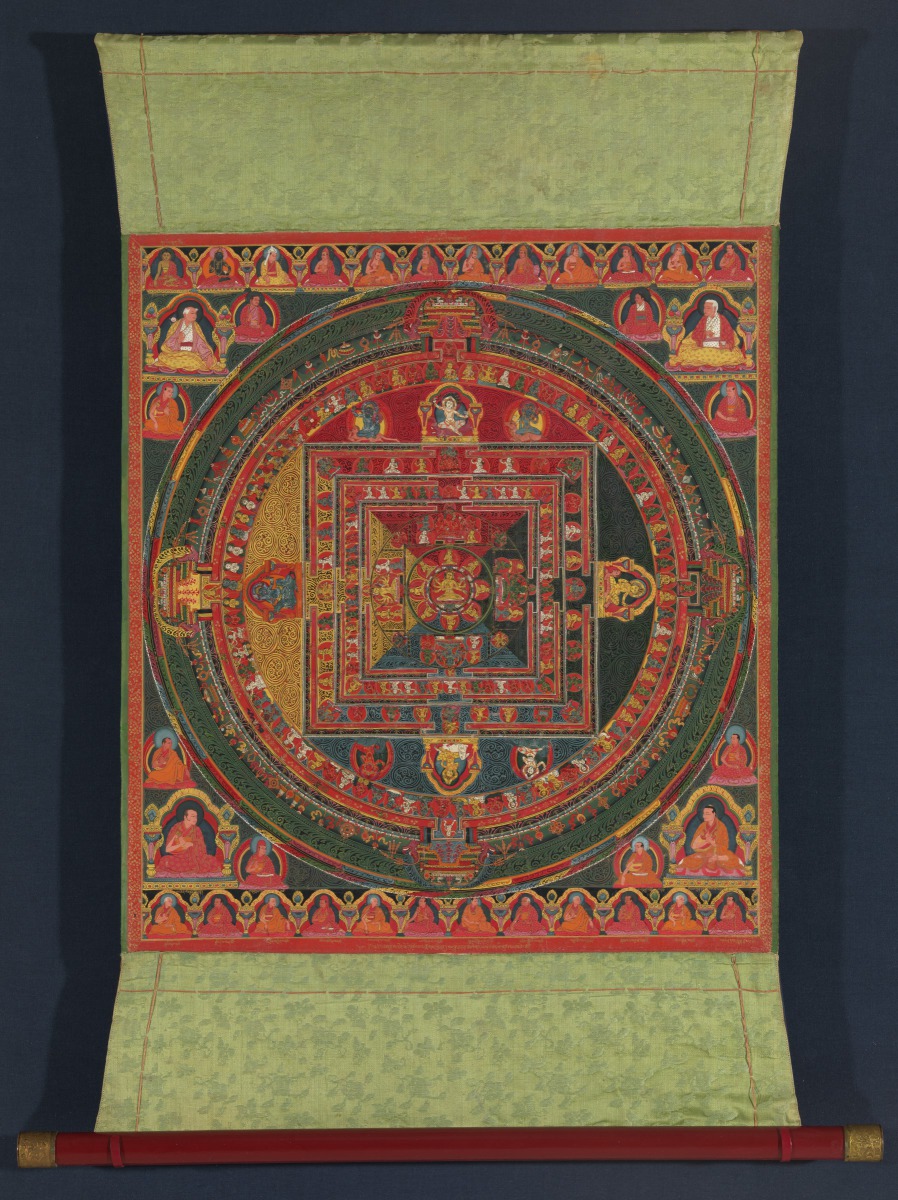
Dharmadhatu Vagishvara Mandala (Primary Title)
thanka (Object Name)
Unknown (Artist)
Seated at this vibrant mandala’s center, at the hub of the Realm of Truth (Dharmadhatu), is the Lord of Speech (Vagishvara). The four quadrants of cosmic space unfold around him, in blue, yellow, red, and green. Four-faced and eight-armed, this pacific form of Manjushri makes a teaching gesture with his principal hands, conveying wisdom, eloquence, and insight into reality’s true nature.
The figures depicted on many Tibetan Buddhist paintings are understood to be very much alive. On the reverse side of the mandala are inscriptions through which a mere object is transformed into a residence populated by animate beings. During a consecration ritual, a lama first visualizes the actual beings represented on the front of the painting entering into the two-dimensional image. A lama then seals those visualizations into the object by inscribing the syllables om, ah, and hum—symbolic of the being’s body, speech, and mind—behind the brow, throat, and heart of each of those figures. Because the painting’s many figures occupy the mandala’s architecture, the pattern of the inscriptions mimics its configuration.
Some object records are not complete and do not reflect VMFA's full and current knowledge. VMFA makes routine updates as records are reviewed and enhanced.
